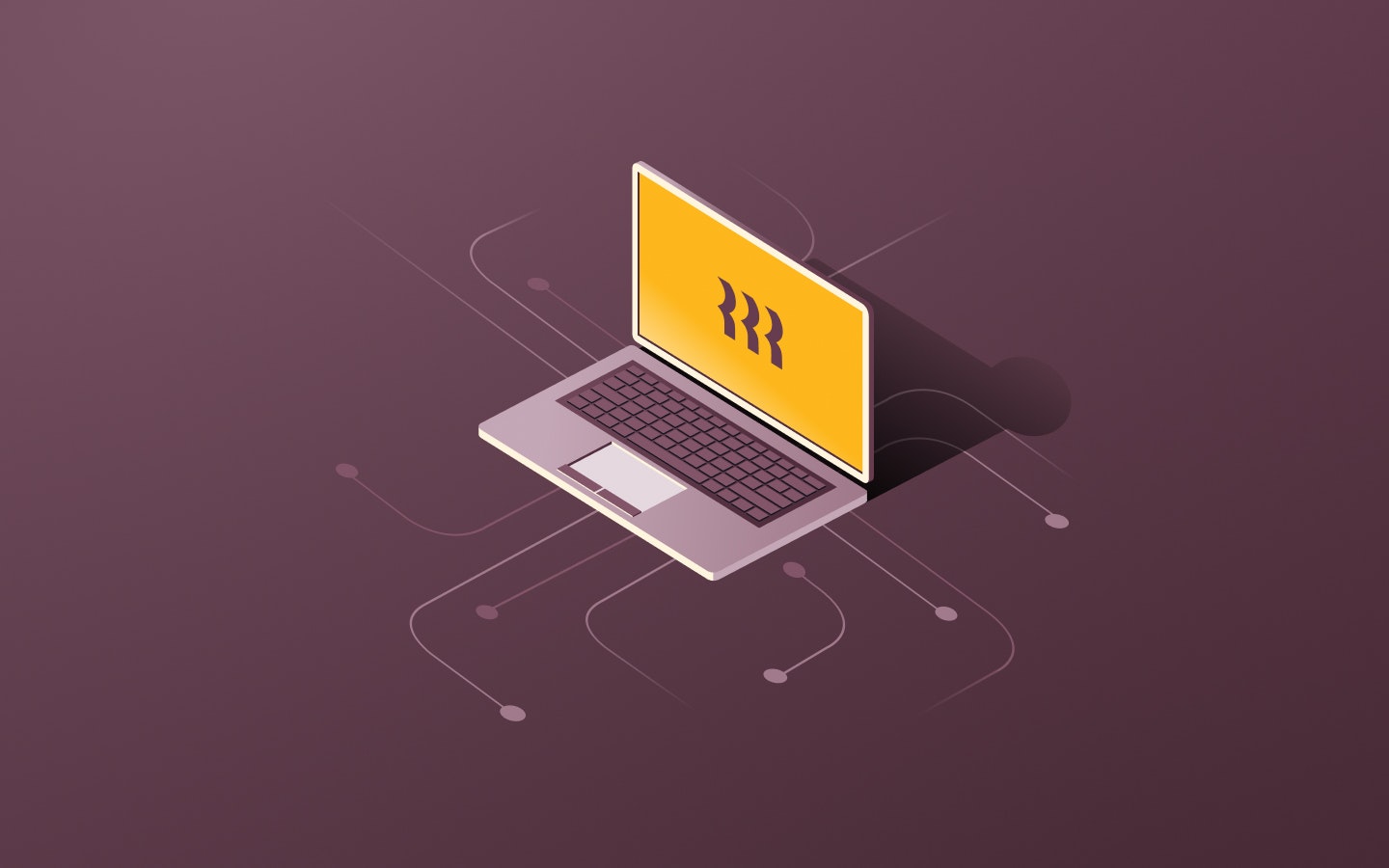The 10 best employee training software tools

Picture a growing company struggling to keep up with training demands. New hires take months to become productive, long-time employees fall behind on industry trends, and managers can't tell if training efforts are paying off. The HR team spends countless hours creating presentations and scheduling in-person sessions, yet employees still struggle to fully absorb and apply the information in their daily work. Meanwhile, competitors are pulling ahead, leaving the company wondering how to bridge the skills gap efficiently.
The solution to this lies in the right tools that can make learning engaging, efficient, and effective. This is critical because training isn't just a box to check during onboarding. To stay competitive, companies need to prioritize continuous learning and development. It's an investment that pays off in many ways: higher employee retention, increased productivity, better customer service, and more.
So how do you deliver great training consistently and scalably? Employee training software can help. These platforms provide a central hub to create, manage, and track learning programs. Rather than cobbling together PowerPoints, webinars, and printouts, you can build interactive courses, deliver them to the right people, and measure the results, all in one place.
This piece explores the top 10 employee training software options to help your company overcome its training challenges and reap the benefits of a well-trained workforce.
What is employee training software?
In simple terms, it's technology specifically designed to administer, document, track, and report on educational programs within an organization. It streamlines the training process, making it more efficient and effective.
Real world example: Imagine a sales team at a rapidly growing tech company. Instead of sitting through lengthy, generic presentations, they can use training software that offers:
- Short, interactive product modules they can access on their phones between client meetings
- Personalized skill assessments that identify areas for improvement
- Virtual role-playing scenarios to practice difficult customer conversations
- Quick access to up-to-date product information right before a big pitch
With this software, the team learns faster, retains information better, and applies new skills immediately in their work. The company sees improved sales performance and can easily track each rep's progress, ensuring everyone stays up-to-date with the latest product knowledge and sales techniques.
The specific features and focus areas vary, but what all employee training programs have in common is the goal of improving the learning experience. For the company, that means more efficient training administration, better visibility into learning programs, and ultimately, a higher return on learning investments. For employees, it means more engaging content, personalized recommendations, and easy access to learning in the flow of work.
Types of training software for employees
When evaluating the different types of employee training software available, it's important to understand the capabilities and use cases of each. Some common categories include:
Learning management systems (LMS)
An LMS is the foundational system for managing the learning process. It provides a centralized platform to create and deliver courses, track learner progress, and assess outcomes. A modern LMS often includes social features, gamification, and mobile access to support different learning preferences. This is a good option for companies that need a scalable way to train employees on a variety of topics.
Digital adoption platforms (DAP)
A DAP is an overlay that sits on top of enterprise software to guide users through tasks and processes. It provides contextual learning in the flow of work, with features like step-by-step walkthroughs, tooltips, and in-app messaging. The goal is to accelerate time-to-competency and reduce support requests when rolling out new software.
Knowledge bases
A knowledge base is a self-serve library of information that employees can search to find answers and instructions. It may include FAQs, product docs, policies, tutorials, and more. The content is usually bite-sized and easy to consume, so learners can get the information they need and get back to work. Knowledge bases make training content easily accessible for reference and support self-directed, informal learning in the flow of work.
The 10 best employee training systems
We've evaluated the leading training platforms to identify the 10 best options. Our criteria included feature set, user experience, integration capabilities, and scalability. Here are our top picks:
1. Rippling
Rippling is an all-in-one HR platform that includes a robust learning management system. It's designed to streamline online employee training and make it easy to stay compliant with mandatory training requirements.
Key features
- Automated course assignments based on employee role, location, and other criteria
- Pre-built course library covering compliance topics like sexual harassment and cybersecurity
- Ability to upload custom SCORM courses for company-specific training
- Mobile-friendly courses that employees can access anytime, anywhere
- Built-in reporting to track course completions and identify training gaps
What sets Rippling apart
Rippling LMS is unique in that it's part of a unified workforce management platform. This allows you to automate training assignments based on employee data, streamline compliance training with pre-built courses, and tie course completion to IT and HR processes. Plus, Rippling offers flexibility in building your course library, with options to upload custom content or purchase additional courses through its integration with Go1.
2. Deel
Deel is a global payroll and compliance platform that provides an LMS to help companies build, assign, and track employee training. The LMS leverages AI to streamline course creation and provides access to a content library from training providers.
Key features
- Intuitive course builder that uses AI and drag-and-drop functionality to simplify content creation
- Automated course assignments triggered by events like employee start dates or departments
- Dashboards for at-a-glance visibility into course completions and learner progress
- Centralized training library that consolidates internal knowledge and makes it easy to share
3. Udemy
Udemy is an online learning platform that offers a vast library of on-demand courses for professional and personal development. Its Udemy Business solution provides companies with a comprehensive LMS to upskill employees across various domains.
Key features
- Extensive course library with 26,000+ curated courses across business, tech, wellness and more
- International collection with courses in 15+ languages, taught by native speakers
- Personalized learning paths combining Udemy courses with company-specific content
- Cohort learning programs with interactive elements like live sessions and discussion forums to drive leadership development
4. Workday
Workday offers a comprehensive cloud-based LMS that is part of its larger human capital management (HCM) platform. The system aims to make learning an integral part of the employee experience and support skill development across organizations.
Key features
- Personalized learning recommendations based on employee interests, attributes and skills data
- Blended learning capabilities with support for various content types like video, quizzes and peer-generated lessons
- Learning campaigns and tailored programs tied to key talent moments like onboarding or promotions
- Workday Content Cloud to manage and track learning content from external providers in a single place
5. Leapsome
Leapsome is a people enablement platform that offers a robust learning module to support effective employee onboarding, upskilling and compliance training. It allows organizations to easily create learning content, personalize learning paths, and connect learning outcomes to goals and performance.
Key features
- Customizable learning paths to guide employees through tailored curricula based on role, department or tenure
- Built-in course library, Leapsome Academy, with on-demand leadership training to scale essential management skills
- Ability to create interactive learning elements like articles, videos, quizzes, tasks and live training sessions
- Detailed analytics dashboard to track learning path enrollments, progress, and completion rates across the organization
6. LinkedIn Learning
LinkedIn Learning is an online educational platform that provides video courses taught by industry experts in software, creative, and business skills. It offers a comprehensive library of high-quality courses that cater to all levels of learners, from beginners to advanced professionals.
Key features
- AI-powered coaching interface which provides real-time advice and interactive learning experiences tailored to in-demand skills
- Personalized course recommendations based on the user's skills, interests and learning history
- Ability to learn on-the-go with mobile apps and offline viewing of course videos
- Certificates of completion that can be added to the user's LinkedIn profile to showcase acquired skills
7. TalentLMS
TalentLMS is an easy-to-use, cloud-based LMS designed to help organizations train their employees, partners, and customers. It enables businesses to create and deliver interactive courses quickly, track learner progress, and boost overall training engagement.
Key features
- Intuitive course authoring tools with built-in content creation aids powered by AI
- Extensive customization options to match the platform's look and feel with your branding
- Gamification elements like points, badges and leaderboards to boost learner motivation
- Comprehensive reporting capabilities to track learner progress and training effectiveness
8. Mitratech Trakstar
Mitratech Trakstar is a talent development platform that incorporates applicant tracking, learning management, performance management, and HR analytics. Its LMS, Trakstar Learn, enables organizations to easily create and deliver engaging training content to support continuous employee growth.
Key features
- Intuitive multimedia course authoring tools to rapidly build interactive training content
- Automated enrollment rules to assign training by role, department or tenure
- Customizable learning paths for onboarding, upskilling and professional development
- Robust reporting on course completions, assessment scores and learner progress
9. Absorb LMS
Absorb LMS is designed to deliver impactful training experiences. It empowers organizations to create, manage and track learning programs for employees, customers, and partners, with a strong focus on learner engagement and ROI.
Key features
- Intuitive course authoring and responsive design to create engaging, mobile-friendly content
- AI-powered features like intelligent recommendations and personalized learning paths
- Robust reporting and analytics to measure training effectiveness and tie learning to results
- Extensive integrations with popular software tools and content libraries to fit seamlessly into existing workflows
10. iSpring Learn
iSpring Learn is a user-friendly LMS designed for fast and hassle-free deployment of eLearning programs. It offers a robust set of features to onboard, upskill, and certify employees, with a strong focus on ease of use and streamlined content management.
Key features
- Intuitive content authoring with built-in support for a wide range of formats including PPT, SCORM, video, and audio
- Flexible learning path builder to combine courses, materials, and assignments into structured training programs
- Advanced user management tools to recreate organizational structure and easily assign training to groups and individuals
- Comprehensive reporting capabilities to track learner progress, course effectiveness, and compliance training completion
How to choose software to track employee training
With so many employee training programs on the market, how do you determine which one is right for your organization? Here are some key factors to consider:
Identify your training needs and goals
Before evaluating software, get clarity on the types of training your company needs now and in the future. Common focus areas include:
- Onboarding new hires
- Product and service education
- Compliance and safety
- Soft skills like communication and leadership
- Technical skills and certifications
- Professional development and career pathing
- Systems and process training
Also consider your training goals and how you will measure success. Do you need to reduce ramp time, increase usage of certain tools, improve support metrics, or upskill employees for new roles? Let these objectives guide your search.
Assess integration capabilities
Employee training doesn't happen in a vacuum. Consider how potential training platforms integrate with the other core systems your business uses, such as your HRIS, collaboration tools, CRM, and more. Seamless integration and data syncing will make training programs more efficient to administer and easier to measure. For example, you may want completion data to flow into performance management records.
Determine the end users
Put yourself in the shoes of the people who will actually use the software day-to-day. For administrators, consider the ease of creating and managing training programs. Is the course authoring intuitive or does it require technical skills? How easy is it to assign learning paths and track progress?
For online employees, evaluate the learner experience and accessibility. Is the platform engaging and interactive? Can users access training on any device, even on the go? Does it support self-directed exploration? Choosing a system that is easy to use will help drive adoption.
User experience
The learner experience can make or break your training program. If the software is clunky and hard to navigate, employees won't use it. Look for a platform with a modern, intuitive interface and features that will engage your learners. Also consider the experience for admins and course creators. How easy is it to build content, set up learning paths, and track results? The ideal platform offers intuitive course creation tools and engaging learner interfaces all optimized for seamless user engagement.
Benefits of implementing employee training software
The right training platform is an investment that can pay dividends for your workforce and your bottom line. Key benefits include:
Lower training costs
Traditional training can be expensive, especially when you factor in instructor fees, travel costs, and productivity loss. Employee training software allows you to deliver training more efficiently and effectively. You can create reusable content, automate enrollments, and track results all in one place. Plus, with on-demand access, you can reach more employees without incurring additional costs.
Increased engagement and retention
Investing in employee development shows your workforce that you value them and want to help them grow. In fact, 94% of employees say they would stay at a company longer if it invested in their learning and development. Training platforms with interactive content, gamification and social features make learning fun and engaging.
Improved performance
Training software allows you to continually develop employee knowledge and skills in alignment with your business objectives. Employee training software helps create learning paths for employees to master their roles and prepare for career advancement. It also helps close skill gaps, teach new processes, and communicate change. Tying learning to on-the-job application improves individual and organizational performance.
Enhanced insights
Robust training platforms provide detailed reporting and analytics so you can measure the effectiveness of your programs. Employee training software helps track metrics like course completions, assessment scores, learner engagement and feedback. It aids in identifying knowledge gaps and making data-driven optimizations to improve outcomes.
The best overall employee training software solution
When it comes to the best overall employee training software, Rippling stands out. Rippling LMS is an intuitive yet powerful tool to streamline the management of educational programs for businesses of any size.
Rippling makes it fast and easy to build courses with its visual drag-and-drop authoring tool. You can upload existing training materials like videos, slides, and quizzes, or choose from a pre-built content library on key topics like compliance and professional skills. This allows you to create custom learning paths for different roles and experience levels.
The platform automatically tracks employees' training progress, sends reminders to learners, and records completions on their profile. Its reporting features enable monitoring of course enrollment, identification of knowledge gaps, and measurement of training initiative ROI.
Beyond its robust feature set as an LMS, Rippling stands out for its ability to integrate employee training with the core HR and IT processes it already streamlines. It can automatically trigger onboarding tasks and course enrollments for new hires.
These comprehensive features and seamless integrations make Rippling a top choice for organizations seeking to optimize their employee training efforts.
Frequently asked questions
Which is the best software for training?
The best employee training software depends on your organization's specific needs, but some top choices include Rippling, Deel, TalentLMS, Udemy Business, and Workday. Rippling is a comprehensive HR platform with a robust, easy-to-use LMS that automates training assignments and compliance.
What is the most widely used employment training method?
On-the-job training is the most common method used by companies. This involves hands-on teaching by experienced coworkers or managers in the actual work environment, where employees learn and practice job-specific skills and procedures under the guidance of subject matter experts. This approach allows for immediate application of learning and is cost-effective since it utilizes internal resources.
Other widely used methods include instructor-led classroom training, eLearning courses, mentoring and job shadowing programs, and blended learning that combines online and in-person elements.
How much does employee training software cost?
The cost of employee training software varies based on the features, number of users, and pricing model. Many LMS providers charge a monthly fee based on the number of users, typically ranging from $2-$10 per user, with some offering volume discounts. Other vendors charge a flat annual rate for a set number of users, often starting around $500-$1000 for 50-100 users, with additional user packs available for purchase.
This blog is based on information available to Rippling as of August 23, 2024.
Disclaimer: Rippling and its affiliates do not provide tax, accounting, or legal advice. This material has been prepared for informational purposes only, and is not intended to provide or be relied on for tax, accounting, or legal advice. You should consult your own tax, accounting, and legal advisors before engaging in any related activities or transactions.









